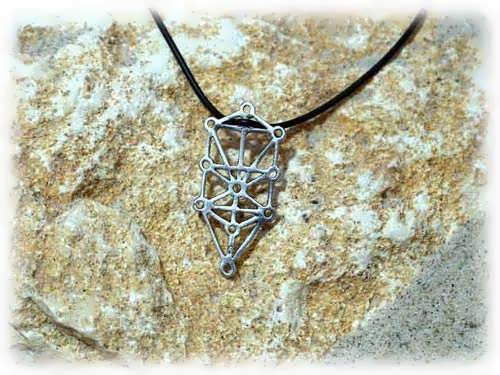The tree has always been a symbol of life, renewal, and energy. So, it shouldn’t be surprising that many different religions and even branches of Science have used this mystic symbol to represent beliefs and ideals. There are many records throughout history that show that the Tree of Life was used in many different parts of the world, during many different periods in time. In Ancient Egypt, for instance, it is said that the first couple (Isis and Osiris) emerged from an Acacia tree (the Tree of Life). The Tree of Life for Assyrians, on the other hand, was a symbol with crisscrossing lines and nodes.
In the Kabbalah, the Tree of Life has various meanings and symbolism. It is used to show the path to God or HaShem. It is also a representation of how God created the world out of nothingness. It can be said, therefore, that the Tree of Life is some sort of map of creation. The ten circles of the Tree of Life are symbols for the ten Sefirot or spiritual centers, while the lines connecting these circles represent the 22 letters of the Hebrew alphabet. When put together to form this powerful symbol, the Tree of Life represents the path one should take to connect to God or to find the union of the divine and the physical self.
Symbols Menu:
» Amulet
» Ajna
» Arsenic
» Merkaba
» Hung
» Yin Yang
» bindi
» IK Onkar
» Khanda
» Halo
» jiahu
» Tau
» Uraeus
» Menorah
» Quincunx
» Tilaka
» Taijitu
» Vajra
» Chai
» Chi Rho
» Bagua
» Dragon
» Hunab Ku
» Caduceus
» Infinity
» Ichthus
» Hedjet
» Lauburu
» Om
» Ankh
» Chalice
» Pentacle
» Maat
» Ogham
» Mandala
» Kartika
» Khamsa
» Heart
» Labrys
» Sun Face
» Raven
» Triskele
» Scarab
» Dove
» Hanukia
» Anubis
» Trishula
» Durga
» Mezuzah
» Bay Tree
» Geruda
» Kinnara
» Quito
» Condor
» Blue Jay
» Falcon
» Makara
» Rosary
» Uluru
» Apsaras
» Hanuman
» Serpent
» Minotaur
» Mercury
» Apex
» Vestra
» Yoni
» Astarte
» dakini
» Calabash
» Mandrake
» Rebis
» Typhon
» Vegvísir


